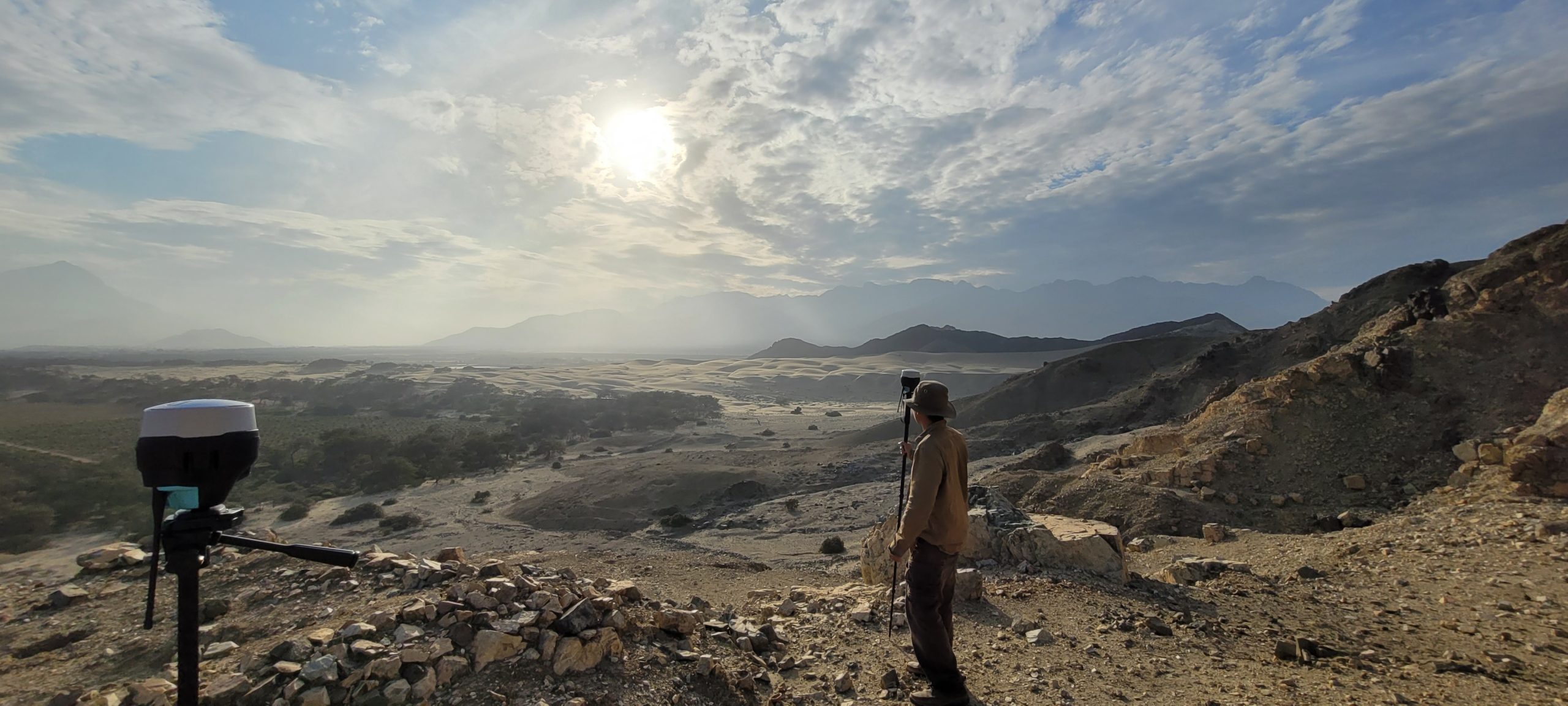Image Description: Along the dry coastal desert in Northern Peru, communities built massive mudbrick pyramids and cities ruled by lords and priestesses. Cerro Prieto Espinal (~450-1470 CE) was a mountainside ceremonial site and fortress in the Jequetepeque Valley of Peru, characterized by massive concentric walls, ceremonial platforms, habitation terraces and adobe pyramids. It was likely a sacred mountain that was worshipped for generations as a living ancestor or wak’a. It was also a gathering place for lords to hold feasts and rituals. The Moche culture likely built the initial fortress to defend against a period of societal and ideological collapse. Later the Chimú and their rival, the Inca, fought in this valley to conquer the Andes, based on accounts in surviving Spanish Chronicles. My research at this site hopes to look at the changes occurring here as a case study of Andean warfare and verify the history recorded by the Spanish centuries later. This season focused on the first excavations at the site which has been partially damaged by looting activity, a major challenge in preserving Peru’s cultural heritage and one exacerbated by the pandemic.
Why did you conduct this research? I conducted this research for my PhD to better understand the conflict in ancient Peru and how the building of such massive fortifications on ancestral mountains affected communities and how conquering empires colonized and took over these sacred spaces. My research is also a testing ground for the use of drone-based surveying and 3D modelling of architecture in archaeology.
Technique: This photograph was taken at sunrise with a Samsung Galaxy S20 FE without any additional modification.
Acknowledgements: SSHRC, the Matthew Tobin Cappetta Archaeological Scholarship, the Explorers Club, the Jackman Foundation. Collaborators: Kyle Shaw Mueller, Giles Morrow, Stefanie Wai. Advisor: Edward Swenson, William J Wintemberg Fieldwork Award, Department of Anthropology

